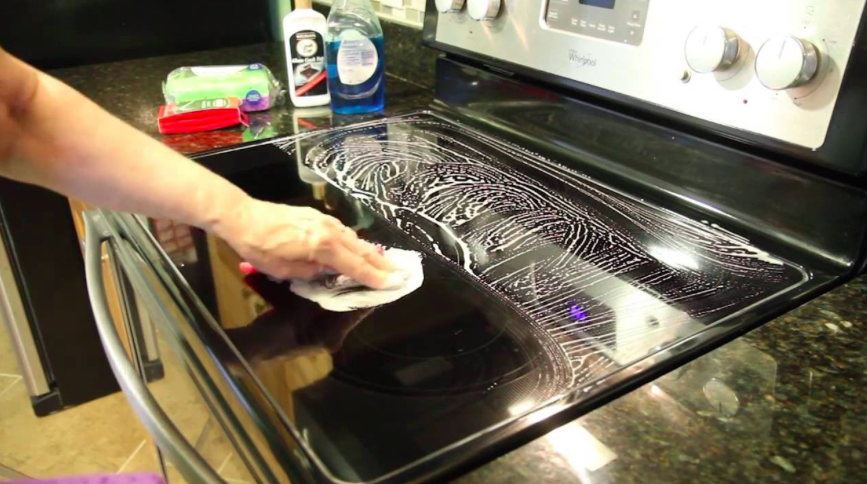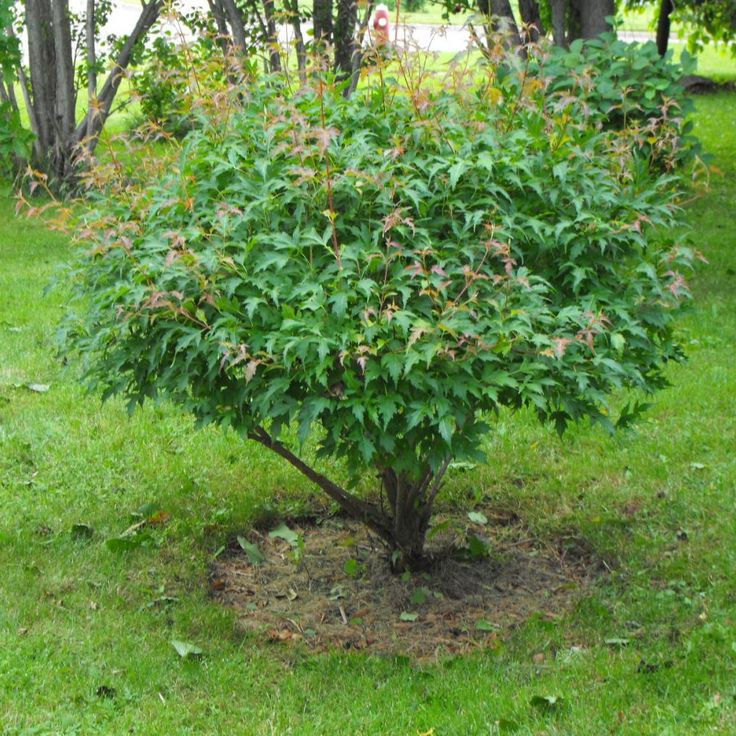Getting rid of tree roots
Tree Root Removal: A How-to Guide
You thought you were done with that tree when the chainsaw fell silent. Not so fast. You still have to deal with tree roots. Tree roots are an entirely different beast. Depending on the size of the tree or the reason for the removal, you may even need to call in professional help to remove the tree roots in your yard.
In this how-to guide, we’ll cover the things you need to know about removing tree roots, the conditions you might face, tools you can use, and even when you might need to throw in the trowel and call for expert help.
Why Should You Remove Tree Roots?The most obvious reason to remove tree roots is that there is a stump in your yard that serves as a reminder of a tree that once stood there. And like the rest of the tree, you need it gone for one reason or another.
But that’s not always the case. You may, in fact, want to save the tree, but eliminate pesky roots that are cracking your sidewalk or clogging up the sewer line. Whatever the reason, we’ve got you covered. So let’s get started.
Taking out tree roots can be a big job, especially if it was a big tree. Its underground root system can spread 20 feet deep, sometimes even more in the right conditions. To remove tree roots that are left after taking down a tree, in most cases, you have three options:
- Physically remove the roots yourself
- Treat the roots with chemicals
- Hire a professional tree stump killer
Physically Remove Tree Roots on Your Own
Physically taking out a tree stump and its roots is the fastest, but most laborious way to get rid of it. Tree stump removal and taking out the tree roots on your own generally involves either digging them out or using a stump grinder. It depends on the type and size of the tree roots you are dealing with. This type of DIY project works best with smaller stumps and roots.
Digging Out Tree Roots
First, call the utility company to make sure you aren’t digging around water, sewer, or other underground lines.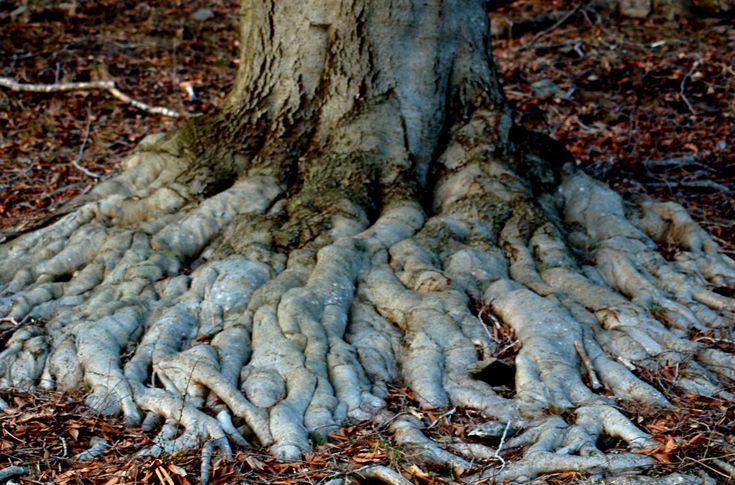
To dig out the roots, you’ll need a few supplies:
- Spade
- Loppers
- Grub hoe
- Root saw (possibly)
Here’s how to dig out tree roots by hand:
- Using your spade, you’ll want to dig out the soil that surrounds the roots to expose them. Pull out any loose roots until no more loose ones remain.
- Dig out the dirt surrounding the ones that are still intact and cut through them using your loppers. Try to cut far from the root ball.
- Next, use the grub hoe to lift out the cut roots. Pull additional ones out by hand if you can. Push the stump back and forth to loosen the roots and continue to cut and pull roots until you can remove the root ball from the soil. A root saw may be needed if the roots are too thick for the loppers.
Using a Stump Grinder to Remove Tree Roots
Photo Credit: Kinemsm / Wikimedia Commons / CC BY-SA 4. 0
0In some cases, digging out the tree roots may prove difficult. But there is another option to physically remove them, and that is with the use of equipment. Stump grinding a pesky tree trunk is work, but you can eliminate it quickly, and even create some fresh wood mulch in the process.
If you use this method, you’ll need:
- Chainsaw
- Shovel
- You’ll need to rent a stump grinder
The average cost to rent a stump grinder is between $100 and $400. They can be found at your local home improvement stores such as Lowe’s or Home Depot. Or you can rent one from an equipment store such as Sunbelt.
Pro Tip: Because of the debris involved, it’s important to wear the right safety gear. This includes fully covering your body with pants, a long sleeve shirt, and protective headgear and glasses.
- Use your chainsaw to trim the trunk as close to the ground as possible.
- Dig up any rocks and debris around the trunk that could damage your grinder.

- Once the trunk and roots are prepped, you can drive the grinder onto the stump and start grinding it down.
Depending on the size and location of the tree, you’ll grind down anywhere from 2 to 4 or more inches. After you’ve completed this, use your shovel once again to dig up tree roots that were attached to the trunk.
Once you’ve completed the process, it’s time to treat the area. You can do this by shoveling or raking the loose wood chips onto the area where the stump was. If it is in a grassy area, also add topsoil and grass seed. If not, use mulch to help cover it.
Continue to check on the hole and treat it until it becomes a natural part of the yard.
If you’re contemplating how to remove the stump before you worry about removing the roots, check out our guide on 5 Ways to Remove a Tree Stump.
Treat the Roots With Chemicals
If you choose to treat the tree’s roots, there is a chemical herbicide option, which works fast to eliminate roots, or the more natural option of using rock salt, which is equally effective but takes longer.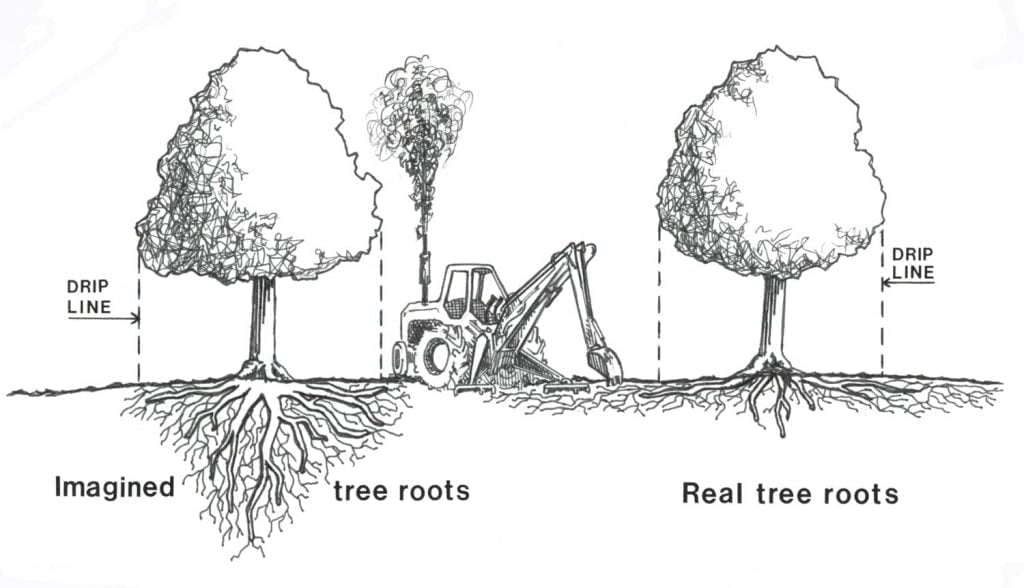 You can also use Epsom salt or another highly concentrated form. Table salt won’t do the trick.
You can also use Epsom salt or another highly concentrated form. Table salt won’t do the trick.
Remove Roots Using a Chemical Compound
Treating chemically is easier, but will take longer.
You will need:
- Saw
- Water hose
- Garden sprayer or paintbrush
- Herbicide – a glyphosate herbicide with an active ingredient concentration of at least 41 percent is best.
Pro Tip: Wear safety goggles or a face shield, a dust mask and hearing protection while working with the saw.
- Use the saw to make a fresh cut across the tree stump.
- Saturate the tree’s outer layer (just behind the bark) with water. The water will help distribute the herbicide to the tree roots.
- Next, mix the glyphosate herbicide with water to create a 50/50 solution, and use your garden sprayer to saturate the outer ring of the tree stump with it. Try to avoid getting the solution on the grass or any nearby plants.
Once the chemical treatment is applied, you just wait. It will take about two weeks for the tree roots to completely die off.
It will take about two weeks for the tree roots to completely die off.
Remove Roots With Rock Salt
It will take a few months and a few applications to get the job done.
First, you’ll need:
- A drill
- Drill bit that’s 3/8 of an inch in diameter.
- Rock salt
- Water
Pro Tip: Take care when handling rock salt and always wear gloves, because when it contacts your skin, it can cause “salt burns.”
- Drill several holes in the tree stump that is about three to four inches deep. If there are any exposed roots on the ground, drill holes in these too.
- Fill each hole completely with the rock salt, then add enough water to cover the hole without any spilling out and causing damage to other vegetation. Do this several times each month.
The rock salt will rob the roots of any water and after a few months, your tree roots should be dead.
How To Remove Roots Inside Your Plumbing Pipes
Clogged plumbing due to tree roots is a common issue for homeowners.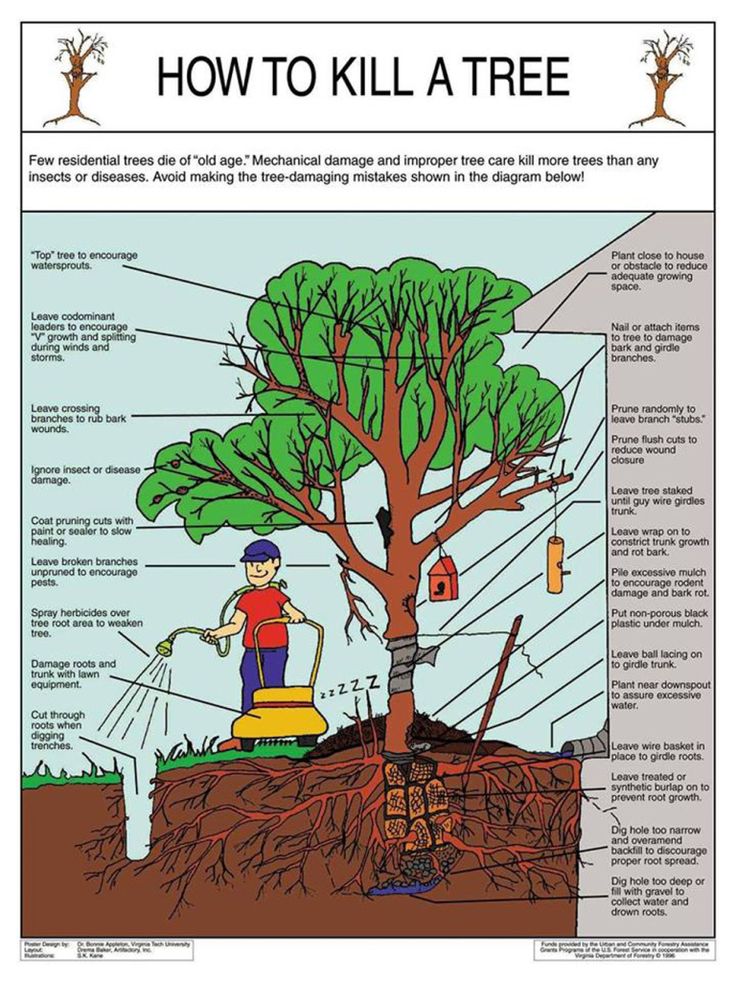 But if you take proactive measures, you can easily correct this problem with just a little rock salt.
But if you take proactive measures, you can easily correct this problem with just a little rock salt.
- Pour about half a pound of rock salt at a time into your toilet and flush until it goes down the pipes.
- Repeat until you’ve used a full two pounds.
- Then close off the bathroom and don’t let anyone in the family use that toilet for about 8 to 12 hours.
The rock salt will kill the tree roots by robbing them of their moisture. Repeat this monthly for ongoing maintenance.
Tree Root Removal Without Harming the Tree
Sometimes you love the tree in your yard but hate the roots that are tearing up your sidewalk or clogging up the plumbing. So what do you do about them? Can you eliminate these roots without harming your tree?
The answer here is yes. You can trim the roots back and you can take measures to prevent them from coming back in unwanted areas. First, you’ll need a water hose, hand trowel, and a wheelbarrow or tarp to temporarily place the dirt, root saw, and material to create a root barrier (plastic, metal, or concrete).
With supplies ready, start by using your hose to soften the ground with water. You want the ground to be damp, but not soggy. Next, use the hand trowel to loosen the soil and feel out the roots. Remove the soil in and around the roots and place it in the wheelbarrow or on the tarp. It’s best to use your hands for this.
Once the area is clear of dirt, cut the roots using your root saw, but be careful. A few guidelines to follow so that you don’t damage the tree are:
- Don’t cut more than one-third of the roots.
- Measure the tree trunk’s diameter, then multiply it by three. That’s as close to the trunk as you want to cut.
- Cut only those roots smaller than the size of a fist.
- Do not cut any more than 25% from one side.
After you’ve trimmed the roots, dig a trench between them and the area that you don’t want them to go. Create a barrier at least 12 inches high and 10 inches long using a material like metal, plastic, or concrete, then cover it with soil. Pat or compact the soil down and spray with water to wet the ground.
Pat or compact the soil down and spray with water to wet the ground.
Hire a Professional
There are several reasons that you may want to hire a professional tree service to remove your tree stump. For example, if you don’t want to mess with the physical work of digging or grinding the stump yourself, and you don’t want to wait weeks or even months for it to go away, then it’s a good idea to let a pro take care of it for you.
In many cases, if you are having the tree professionally removed, then you can hire the same company to take out the stump too — for an additional fee.
According to Bates Hite, the owner of Tree Stump Masters in Atlanta, he’s seen homeowners do all kinds of crazy things to remove tree stumps, even lighting them on fire with charcoal. And he warned that the stump grinders you can rent at the local home improvement store are not powerful enough for larger roots.
“You can’t rent a big enough piece of equipment to get the job done right on a large tree stump.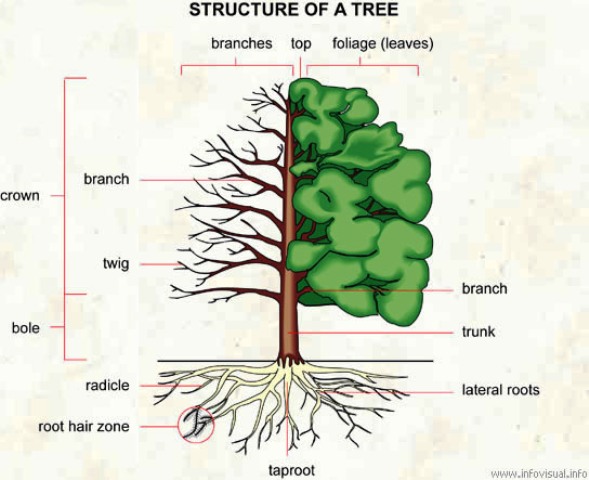 You need to go deep, and you need a big machine,” he said.
You need to go deep, and you need a big machine,” he said.
On average, the cost of tree root removal by a professional tree removal service can range from $250 to $350 depending on the size and location of the tree stump.
FAQ
What is the Easiest Way to Remove Tree Roots?
While labor-intensive, the easiest way often is to dig around the stump, exposing the roots, then using a chainsaw or hatchet, cut the large roots. You can use gardening shears to cut smaller roots.
What will Dissolve Tree Roots?
Rock salt or a glyphosate herbicide with an active ingredient concentration of at least 41 percent can dissolve tree roots.
What Tool Removes Tree Roots?
Depending on the size of the root, you can use gardening shears, a chainsaw, a hatchet, or a handsaw to cut away roots.
What Should I Do With a Tree Stump?
If you have a tree stump, then it should all be removed to avoid it developing health hazards like mold or fungus. The dead tree can still spread disease to your healthy ones if left in place.
The dead tree can still spread disease to your healthy ones if left in place.
If you’d prefer someone else did the work, check out our comprehensive pricing guides:
• How Much Does Stump Grinding Cost?
• How Much Does Stump Removal Cost?
Should I Remove the Roots in My Yard?
If it’s only for aesthetic reasons, no. If the roots are threatening to damage structures or sidewalks, yes.
Call in the Tree Care Experts
Some jobs are best left to the pros. Contact a local tree care expert to take care of uprooting the problem roots in your lawn.
Main image credit: Aaron Escobar / Flickr / CC 2.0
Jennifer Lester
Jennifer Lester is a freelance writer and social media strategist who covers a variety of home and garden topics. She’s a graduate of Texas A&M University and the proud mom of three boys. In her spare time, she volunteers in her community and her children’s schools.
Posts by Jennifer Lester
How to Kill Tree Roots (Project Guide)
Photo: istockphoto.com
Trees add great beauty to your landscape and their shade can help keep cooling costs low. But when a tree outgrows its location or is seriously damaged in a storm, it becomes a hazard that should be removed—and chopping it down is only half the battle.
A tree’s underground root system can extend up to 20 feet deep in ideal soil conditions, and spread over an even greater area. These tree roots can continue to grow even after the trunk is history and, if close to your sewer line or foundation, cause serious damage. Eliminate underground issues with either the chemical or natural treatment described here—just remember to use caution and keep both herbicide and rock salt out of reach of pets and kids. Now read on to get to the root of the problem.
The fastest, most effective way to kill roots is with chemical herbicide, as soon as the tree has been cut down.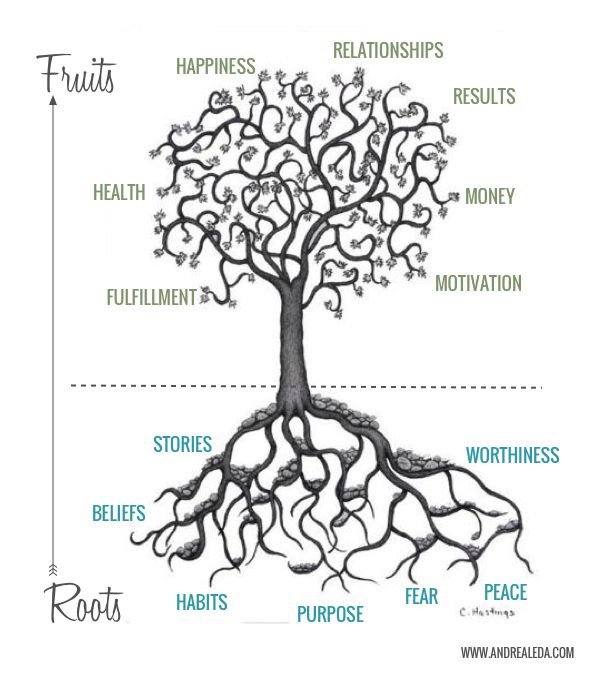 If you can treat the tree immediately, proceed to Step 2; if not, follow Step 1.
If you can treat the tree immediately, proceed to Step 2; if not, follow Step 1.
Photo: istockphoto.com
TOOLS AND MATERIALS Available on Amazon
– Saw
– Watering can (or garden hose)
– Glyphosate herbicide (with 41 percent or higher active ingredient concentration)
– Small bucket
– Garden sprayer (or paintbrush)
This slice should create a flat surface and expose new flesh. With trees three inches or less in diameter, cut across the entire surface of the trunk. For larger trees, expose new flesh of the outer two to three inches.
2. Saturate the tree’s cambium layer—the outer ring located just under the bark—with 2 to 3 inches of water.As this outer layer is still alive and growing, the liquid will help carry the herbicide from the live tissue to the tree roots.
Advertisement
3. Mix a 50/50 solution of glyphosate herbicide to water and apply it to the exposed cambium layer.
Mix a 50/50 solution of glyphosate herbicide to water and apply it to the exposed cambium layer.You can use a garden sprayer, hand-held sprayer, or paintbrush to do so. Be careful in your application to avoid splashing and inadvertently harming plants or grass surrounding the trunk. Tree roots should die off completely in a couple of weeks.
Stumped?
Get free, no-commitment project estimates from licensed landscaping pros near you.
Find Pros Now
+ Option 2: Rock SaltAlthough it takes longer than chemical herbicide, rock salt can effectively kill tree roots by robbing them of water.
TOOLS AND MATERIALS Available on Amazon
– Rock salt
– Water
– Drill (with 1-inch or larger drill bit)
Before you stow your power tool, bore several additional holes into any larger roots that are exposed near the ground.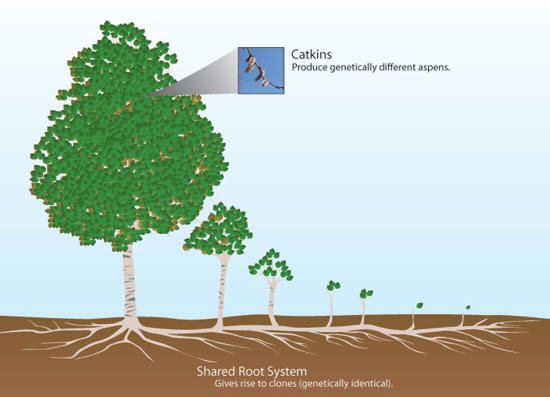
Avoid overfilling, as the rock salt solution is harmful to surrounding vegetation and toxic to pets—you won’t want any spillover. Repeat this process several times for a few months, and eventually rock salt will kill the tree roots. (You’ll know the roots are dead when there is no longer any regrowth from the trunk.)
Fear that the roots have invaded a sewer line or your foundation? Maybe you wish to keep the decomposing material from feeding unattractive fungus. In either case, you could also attempt digging the larger tree roots out of the ground. It’s an arduous process, but once you remove them you can reclaim your lawn.
Stumped?
Get free, no-commitment project estimates from licensed landscaping pros near you.
Find Pros Now
+How to get rid of stumps and tree roots on the site: 4 ways
Sooner or later, every owner of the site is faced with the problem of removing stumps. Even if they didn’t exist initially, they will definitely appear over time. Aging and diseases of fruit trees, the need for redevelopment of the territory - there can be a lot of reasons. We will analyze several working methods on how to remove a stump from the site quickly and easily.
Even if they didn’t exist initially, they will definitely appear over time. Aging and diseases of fruit trees, the need for redevelopment of the territory - there can be a lot of reasons. We will analyze several working methods on how to remove a stump from the site quickly and easily.
All about uprooting stumps yourself
Is it always necessary
4 working methods
— Manual uprooting
— Burnout
— Chemical destruction
— Mulching
The easiest way to solve the problem of removing large and small stumps is during the development of the site. If the territory has not yet been ennobled, special equipment is ordered. With its help, in just a few hours, they clean the site. The disadvantage of this method is obvious: heavy machinery and destructive mechanical uprooting will leave numerous marks on the site. But if the territory is still going to be ennobled, it's not scary.
It is much more difficult to choose the right solution, how to get rid of a stump in an already developed area. There can be a lot of options, but each of them has certain disadvantages. First of all, you need to understand whether it is really necessary to get rid of a piece of wood. After all, you can benefit from them. For example, an interesting landscape decor is obtained from the rest of the trunk. In order to make it, the core is hollowed out and a fertile substrate is poured into the cavity. The resulting "bed" is used to grow flowers, vegetables or berries. Such a flower bed or garden bed can become the center of an interesting multi-tiered composition. A good option is growing mushrooms. Their spores are inhabited by the remains of wood, where mushroom families germinate very quickly.
There can be a lot of options, but each of them has certain disadvantages. First of all, you need to understand whether it is really necessary to get rid of a piece of wood. After all, you can benefit from them. For example, an interesting landscape decor is obtained from the rest of the trunk. In order to make it, the core is hollowed out and a fertile substrate is poured into the cavity. The resulting "bed" is used to grow flowers, vegetables or berries. Such a flower bed or garden bed can become the center of an interesting multi-tiered composition. A good option is growing mushrooms. Their spores are inhabited by the remains of wood, where mushroom families germinate very quickly.
It turns out an unusual and useful “decoration”. Honey mushrooms or oyster mushrooms will give several harvests over the summer. At the same time, the mycelium actively destroys wood, because it needs food for growth. In five to six years, mushrooms will completely destroy the remains of the tree.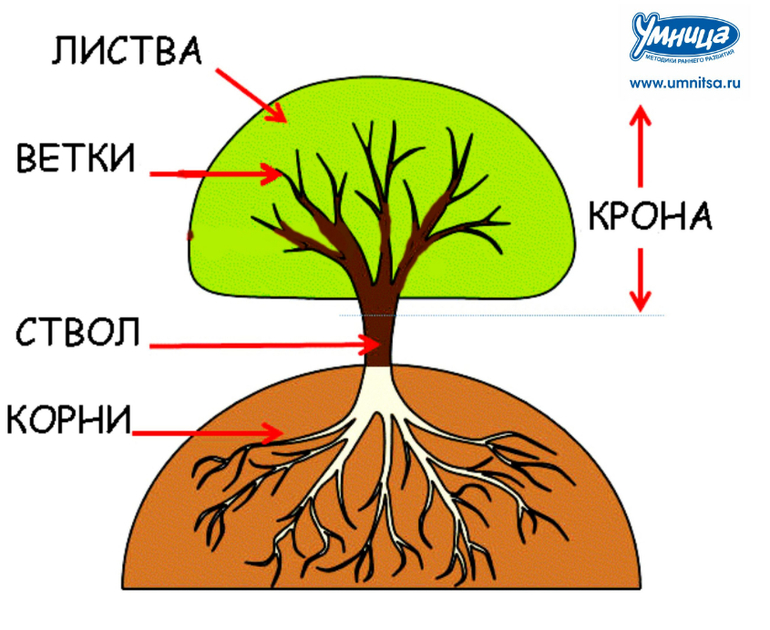 Flowers or vegetables "work" in a similar way, however, they need much more time to destroy.
Flowers or vegetables "work" in a similar way, however, they need much more time to destroy.
ShutterStock
If the stump stands where it is planned to set up a flower garden or beds, or somehow interferes with the improvement, you have to think about how to uproot the stump on the site. You can invite specialists with a cutter. A powerful technique will crush the wood, deepening 20-30 cm. This is enough to get rid of the roots. Unfortunately, it is not always possible to use the services of specialists. Then use the methods available for independent use.
1. Manual uprooting
In order not to mess around with the remains of the tree, when sawing, you can cut the trunk at ground level. This is done if they do not interfere and it is possible to leave them to rot in the soil. To speed up the process, the cut is chopped with an ax. Sooner or later, the rhizomes will rot, but this will not happen very soon. All the time, while the processes of overheating are going on, it will not be possible to break a garden bed, put up any building, etc. at this place.
All the time, while the processes of overheating are going on, it will not be possible to break a garden bed, put up any building, etc. at this place.
When there is no time to wait, choose manual uprooting. This is a very labor intensive method. To begin with, they dig a hole around the hemp, exposing the rhizome. It is important to expose all root processes in the trunk area. You can not remove the soil with a shovel, but wash it off. To do this, put a drain chute in the pit and “wash” the rhizome with a stream of water under strong pressure. The bare root shoots are cut. This must be done very carefully so as not to get hurt. It is extremely inconvenient to work in the pit, the roots are most often mixed up and very hard. But it is imperative to cut them, otherwise, when the hemp is pulled out, the long rhizome will easily destroy the adjacent path, fence or building foundation. A snag with chopped roots is fixed to a winch or any other lifting mechanism and pulled out of the ground. If it is not possible to use mechanical devices, the stump is split, loosened and untwisted fragments, removed from the ground.
If it is not possible to use mechanical devices, the stump is split, loosened and untwisted fragments, removed from the ground.
Instagram vash_sadovnik__
Instagram vash_sadovnik__
Uprooting takes a lot of time and effort, so not everyone is ready to do it. There are ways to remove the stump without uprooting. They are much easier. Let's analyze the most effective of them.
2. Use of fire
A very simple, but rather dangerous method. It can be used with certain restrictions. First of all, the remains of the tree must be removed from buildings, fences, underground and air communications, power lines. It is impossible to carry out the procedure on peat soils (peat bogs ignite quickly and can smolder for a long time). Putting out an underground fire is very difficult, almost impossible.
Burning is carried out in calm, dry weather. All flammable items are removed to a safe distance and be sure to prepare a supply of water in case the situation gets out of control. Start by drilling two channels inside the hemp. Drill to the maximum possible depth. One is lowered strictly vertically, and the second is placed at an angle to it. In the first there will be a fire, through the second it will receive the air necessary for combustion. In large snags, it is advisable to drill several holes for air. This will speed up the burning.
All flammable items are removed to a safe distance and be sure to prepare a supply of water in case the situation gets out of control. Start by drilling two channels inside the hemp. Drill to the maximum possible depth. One is lowered strictly vertically, and the second is placed at an angle to it. In the first there will be a fire, through the second it will receive the air necessary for combustion. In large snags, it is advisable to drill several holes for air. This will speed up the burning.
ShutterStock
A flammable liquid is poured into the central cavity. It is best to take lighter fluid or diesel fuel. Gasoline will burn very quickly, which will not give the desired effect. A cotton wick is lowered inside the hole and lit. The only thing left to do is keep the fire going. Depending on the condition of the wood, it will last from 13 to 16 hours.
You can speed up the process if you remove the stump using the Tsiolkovsky method.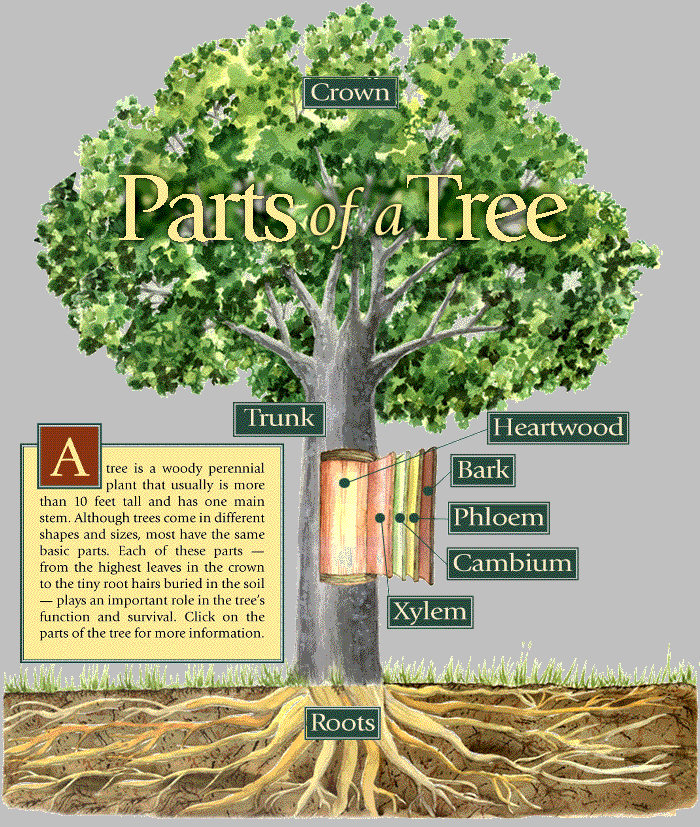 In this case, "caramel fuel" is used as fuel. This is a mixture of ammonium nitrate and sugar in a ratio of 7:3. The ingredients are mixed and carefully poured into the drilled hole. You need to know that the mixture gives a very strong flame. In a matter of minutes, the entire snag, including the roots, burns out. Therefore, it is imperative to observe precautionary measures: it is necessary to ignite the fuel from a certain distance; for this, a gasoline “path” is laid to it.
In this case, "caramel fuel" is used as fuel. This is a mixture of ammonium nitrate and sugar in a ratio of 7:3. The ingredients are mixed and carefully poured into the drilled hole. You need to know that the mixture gives a very strong flame. In a matter of minutes, the entire snag, including the roots, burns out. Therefore, it is imperative to observe precautionary measures: it is necessary to ignite the fuel from a certain distance; for this, a gasoline “path” is laid to it.
3. Chemical destruction
The essence of the method is the decomposition of root residues with the help of chemicals. This is an effective, but slow way to get rid of tree roots. Different preparations are used for destruction, but the method of their application is approximately the same. To begin with, as many deep holes as possible are drilled in the saw cut. This is best done in the fall, two to four weeks before the first frost. The chemical substance will have time to penetrate into the most remote root shoots before the cold weather and will destroy them all winter.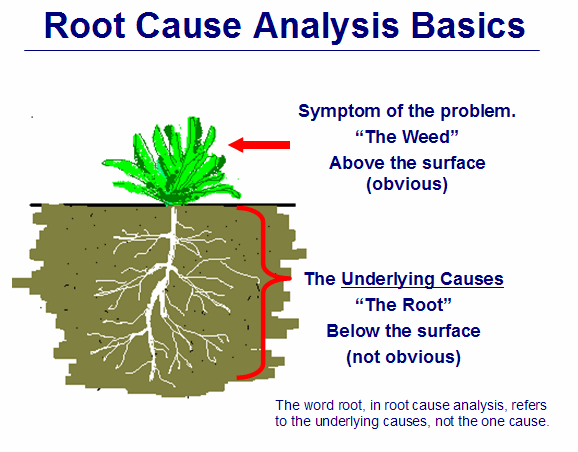
Chemical reagent is poured into the holes. Most often it is carbamide, aka urea. This is a well-known fertilizer that decomposes wood in large quantities. The granules are tightly packed in the cavity, spilled with water, covered with plastic cut and the film is securely fixed. You can plug filled holes with corks or cover with clay. After a few months, the snag will soften, it will be easier to remove it from the ground. Urea, even in large quantities, is relatively safe for the site.
The same cannot be said about potassium or sodium nitrate. They are also used to destroy wood residues. Nitrogen salts are toxic in high doses, so the technique is not suitable for areas where there are new plantings near tree residues. Saltpeters act differently than urea. They dry up the root, which is then easily taken out of the ground. If the soil is not peaty, you can simply burn it, because it is saturated with a substance that stimulates combustion. To destroy a hemp with a diameter of 15-16 cm, it is necessary to lay 2,000 g of any reagent.
Salt will help solve the problem of how to remove stumps from freshly cut trees. Tree juices will quickly spread it throughout the rhizome, which the salt will “dry out” in a year and a half. The removal procedure is the same as described above. You need to know that a high concentration of salt will not allow plants to develop in this place for several years.
Copper or iron sulphate can also be used as a chemical reagent. Each of these preparations is a highly effective insecticide and fungicide, toxic in large doses. Vitriol is used for chemical uprooting of diseased stumps. No other way can prevent the infection of nearby plantings.
Herbicides work quickly and effectively. They process only a fresh cut, pour the roots with a solution. Autumn processing allows you to remove the rhizomes from the ground in the spring without any problems. But the soil turns out to be contaminated with herbicides, nothing will grow here for several years.
ShutterStock
4.
 Mulching
Mulching The essence of the technique is that the mulch layer blocks the access of air to the saw cut. Without oxygen, the roots slowly die. True, it takes a lot of time. Mulching is more suitable for destroying small stumps. For example, it will be a good solution for getting rid of cherry or plum roots.
The trunk is cut at ground level or slightly above. The saw cut is covered with a dense layer of mulch 20-25 cm high. It is desirable to cover the entire near-trunk circle. Any organic matter is suitable as mulch: chopped grass, leaves, plant debris. The rhizomes will rot for a long time, for several years. All this time, organic matter will have to be added, as its layer is thinning.
ShutterStock
There are many ways to uproot trees. The optimal one is chosen taking into account the prevailing conditions. So, effective mechanical uprooting is not suitable for an already ennobled area, but on a newly developed area it will help to get rid of rhizomes quickly and easily.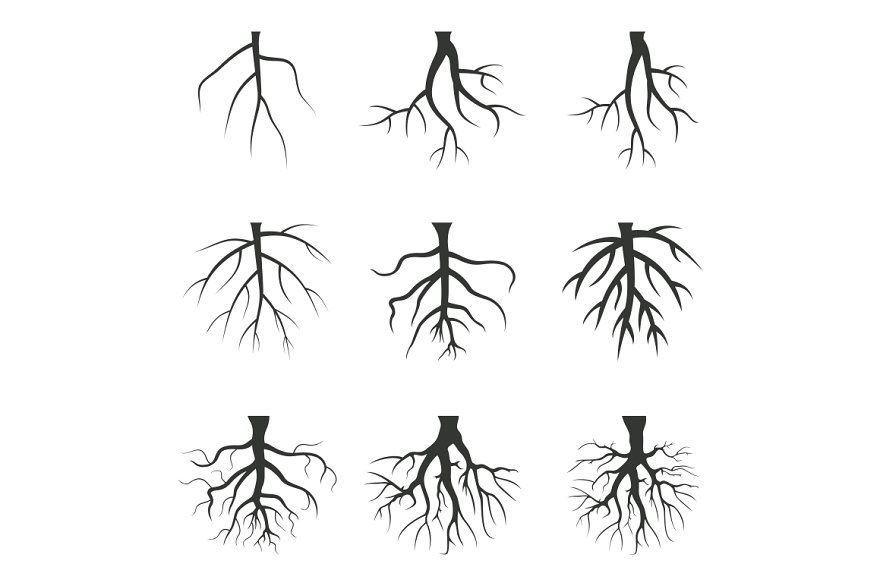 In order not to spoil the landscape design, they invite specialists with a cutter, they can remove any stumps in a short time. Or use the safest chemical uprooting. Burning is effective, but it must be done very carefully. The risk of fire and fire is too great.
In order not to spoil the landscape design, they invite specialists with a cutter, they can remove any stumps in a short time. Or use the safest chemical uprooting. Burning is effective, but it must be done very carefully. The risk of fire and fire is too great.
Prepared by
Inna Yasinovskaya
folk remedies for roots without uprooting, how to destroy and how to remove them with saltpeter, how to kill them chemically
The formation of stumps and roots in the garden is due to the fact that trees die naturally. And it’s good when there is one inconspicuous stump on the site, which does not particularly disturb the aesthetics of the site. But when there are several of them, the gardener begins to think about how to get rid of the problem. And to do this today is quite real quickly and efficiently. There are many effective methods that everyone can use.
Contents
- 1 Damage from tree roots in the plot
- 2 Ways to remove roots - how to quickly remove and remove
- 2.
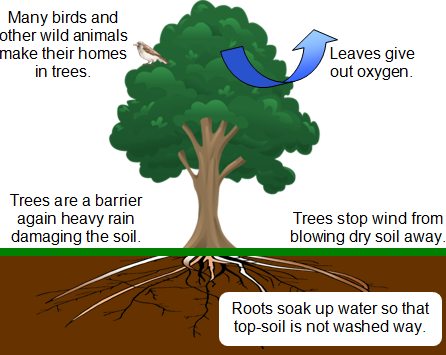 1 Chemical uprooting method - using saltpeter
1 Chemical uprooting method - using saltpeter - 2.2 How to dig and uproot stumps and remove roots 2.2 destroy by crushing stumps
- 2.
- 2.4 Using salt to get rid of roots
- 2.5 Uprooting with urea
Harm from tree roots in plot
very often people want to fill their home garden with new trees. But here they have such an obstacle in their way as old stumps. Another need to clean the stump is due to the fact that the tree is in disrepair. In addition to this, the stump is a real obstacle to creating a landscape composition. All of these situations require the immediate removal of the stump from the garden. You may also be interested in learning how to get rid of the onion fly in the garden.
On the video - damage from stumps and roots on the site:
Ways to remove roots - how to quickly remove and remove
Today, you can remove the roots that remained after the tree, using chemical, mechanical methods.
Chemical method of uprooting - using saltpeter
This method can be classified as universal. It is very often used by gardeners when dealing with stumps on their site. The essence of the method is that wood residues must be burned, but only before that they are impregnated with a strong oxidizing agent - nitrate. You can also use saltpeter when destroying gout in a summer cottage.
Thanks to this unique tool, it is possible to burn the stump, and this can be done not only with the above-ground part, but with the roots. Before carrying out the manipulation, it is necessary to perform a number of preparatory measures:
- Drill as large a hole as possible in the tree, using the thickest possible drills. Such actions should be carried out in late summer or early autumn.
- Insert saltpeter into the hole made up to the top . For these purposes, you can use both potassium and sodium composition. After that, pour saltpeter with water.
 This will allow for better impregnation of the wood.
This will allow for better impregnation of the wood. - Cover the top of the hole with pre-prepared wooden plugs. You can also use plastic wrap, which is tied tightly around the tree trunk.
Every gardener has encountered such a problem on his site as a dandelion, but this information will help you understand how to get rid of dandelions on your site.
On the video - removing the roots with saltpeter:
Leave the prepared stump in this form until next summer. Over the entire period of time, its root system will feed on saltpeter and dry out. It is necessary to make a fire near the stump. It should burn until the complete destruction of the remnants of the tree.
You may also find it useful to know how to deal with field bindweed in your garden.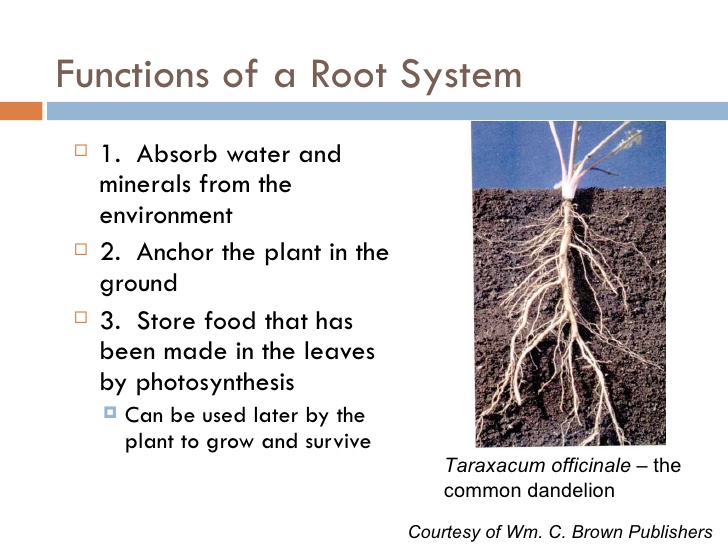
When the top cut of the stump is centered on the same level as the ground, it is worth making additional holes in it. Pour kerosene or gasoline there.
Ignite this combustible mixture so that combustion is maintained throughout the volume. As soon as the roots are completely burned out, the place where the stump grew is dug up and covered with soil.
How to dig up and uproot stumps and roots
This method is labor intensive. It is realistic to perform it only under the condition of a shallow location of the roots and the average size of the trunk itself. To perform this operation, you need:
- Make trench near the stump. Its depth will be 1 m.
- Using a bayonet type shovel and an ax, all side branches of the root system must be removed.
- With the help of a crowbar, which must be brought under the stump, it is loosened from one side to the other.
- In addition, it is necessary to constantly trim the exposed lower processes of the root system with a shovel.

- Once the root branches have been removed, the remains of the trunk are free and removed from the hole.
It is also worth learning more about how to get rid of hops on the site, and what are the most effective means.
In the video - digging and uprooting:
Even on the site, uprooting can be done using special equipment. When the trunk diameter is less than 30 cm, then a rope must be used to remove it. Pick it up by the stump and use a tractor to create traction. Using this method, cutting down the tree is carried out very high - at least 1 m above ground level. This will firmly fix the cable to the bottom of the stump.
If the equipment cannot reach the stump, then you can use a mini-tractor or a winch. But then chopping needs to be done with larger lateral processes.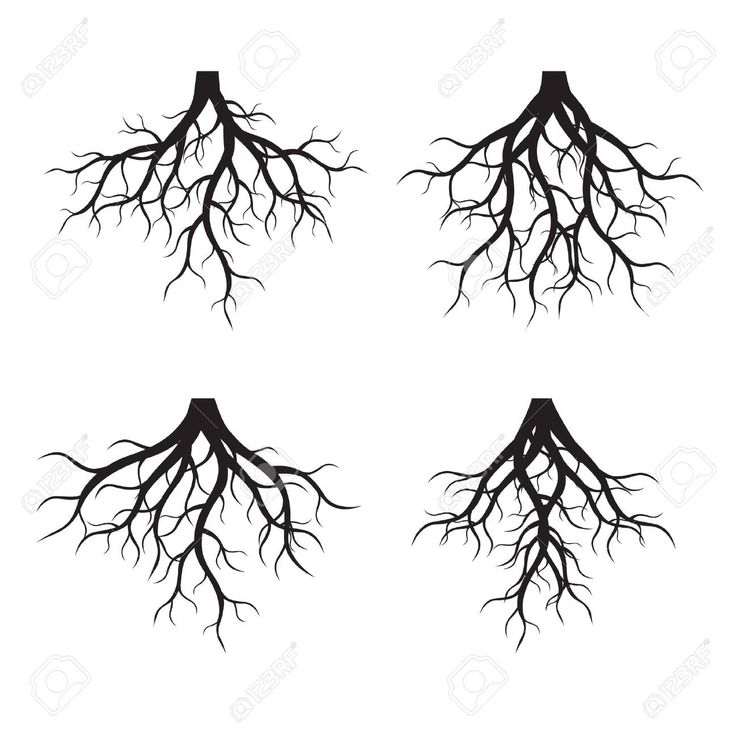 Do this to a depth of 30 cm. And the most successful option would be to dig near the trunk to a level of 0.5 m. Another problem in the garden is maple, and what chemicals can be used to get rid of it are indicated here.
Do this to a depth of 30 cm. And the most successful option would be to dig near the trunk to a level of 0.5 m. Another problem in the garden is maple, and what chemicals can be used to get rid of it are indicated here.
How to remove and destroy by crushing stumps
To remove a stump, you need to use special devices with which you can crush wood. Most often involve forest cutters. With the help of such a cutter, it is possible to grind wood to a depth of 30 cm in one go.
The main disadvantage of this method is the high cost of the device. In addition, it is not advisable to buy cutters and a tool for single stump removal. It may also be useful for you to learn how to get rid of thistle on the site forever, and for this you should follow the link.
In the video - the use of special equipment:
Using salt to get rid of the roots
This is another option for chemical removal of stumps on the site. The fact is that salt is the simplest catalyst for the process. And it is worth using table salt.
The fact is that salt is the simplest catalyst for the process. And it is worth using table salt.
Make a recess in the stump 8 cm deep and 10-15 mm in diameter. The more holes there are, the better. Pour salt into the holes made, and crush the earth on top. The result of such processing will be the complete destruction of the remains of the tree. But it will be possible to observe it only in a year. A very interesting issue is the fight against wood lice in the garden plot, but how all the work to destroy it is carried out is described in the article at the link.
Uprooting with urea
This method is identical to where saltpeter or salt had to be used. To begin with, make holes in the stump with drills. Send urea into the resulting recesses. Pour water over the top, and then wrap the stump with polyethylene. After 1-2 years, it will be possible to remove the remains of a decayed stump, and scatter fertile soil in this place.
To fit 1 kg of urea, approximately 30 holes will need to be made. At the same time, their diameter should be about 1 cm, and the depth should be 30 cm. The consumption of urea for the removal of a medium-sized stump is carried out by analogy with saltpeter. And here's how to get nettles out of the area, and what chemicals should be used. this information will help you understand.
The advantages of this method include:
- minimum physical work;
- soil is not saturated with nitrates;
- complete removal of the stump, so that the site can be used for further development, making a flower bed or garden.
This method has its disadvantages:
- long period of stump destruction;
- need to buy additional materials;
- high chemical consumption.
It is worth clicking on the link and learning how to get rid of burdock on the site, and what means to do it the fastest.


